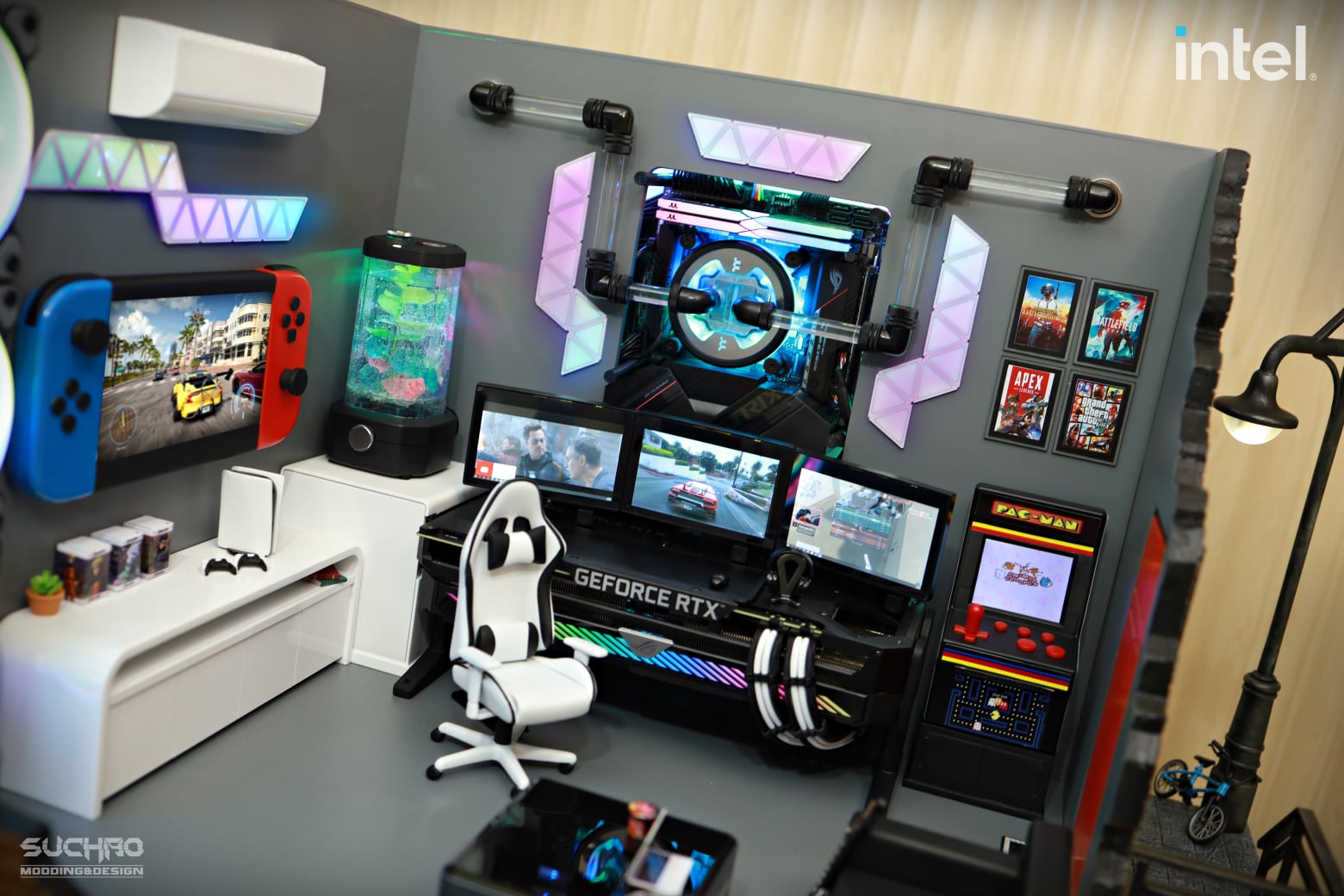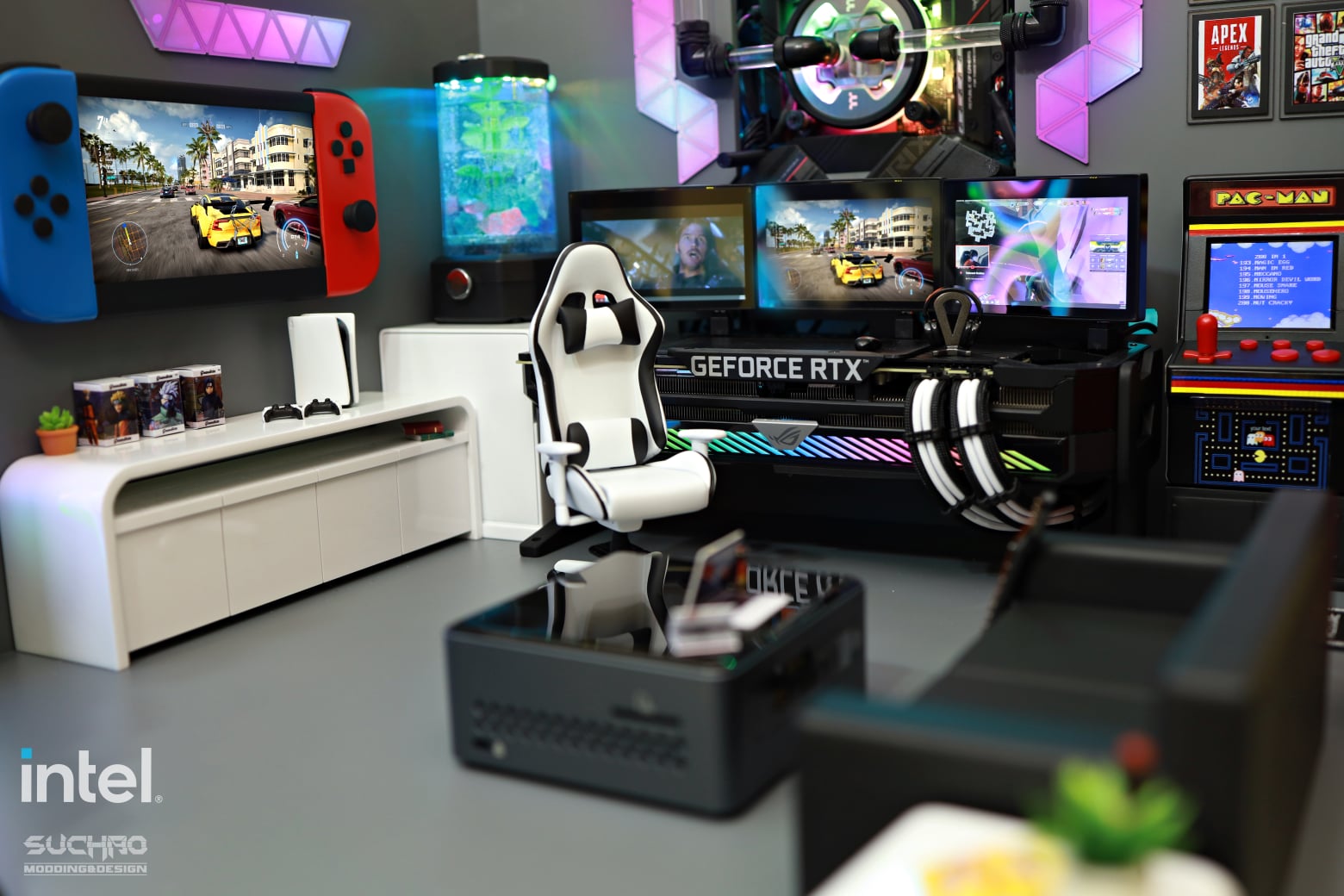You’ve seen this setup before. A TV mounted on the wall with mock Joy-Cons on the sides, triple monitors next to a hefty battle station, and enough Nanoleaf triangles for an official “content creator” badge. Now imagine if you could take that iconic gaming room of all of our dreams, shrink it down, and stick a gaming PC inside. That’s exactly what Suchao Modding & Design did.
As part of Intel Gamer Days, the Thailand-based outfit stuffed a high-spec gaming PC into a diorama of a gaming battle station. The room comes fit with triple monitors — set atop an RTX 3060 Ti desk — a mock PlayStation 5, a Pac-Man arcade cabinet, and a water-cooling reservoir disguised as a fish tank. Plus, of course, enough RGB to make a pony puke.
You can win it, too. The build is up for grabs in support of Technovation, which is a nonprofit that empowers girls through technology education. You need to donate at least $10 to enter into the giveaway, which gives you 100 entries.
Although you probably wouldn’t use it as a daily gaming PC, this custom build has powerful specs. In addition to the RTX 3060 Ti, it comes with an Intel Core i7-11700K, 16GB of RAM, and a 1TB M.2 SSD. It even includes a NUC kit, cleverly hidden as a coffee table, as well as a 650W power supply dressed up as an air conditioning unit.
Suchao Modding & Design extensively logged the build process on its Facebook page. It was a combination of 3D printed parts, some dowel roads and wood, and a lot of careful attention to detail with painting. Even after scrolling through dozens of photos of the build process, the end result seems too good to be true.
The modding outfit is no stranger to unique designs, including a rig designed like a Super Mario Bros. level and a PC strapped inside the chest of a Gundam. This build may be its finest work to date, though. The attention to detail is second to none, going as far as to include mock figurines on the entertainment center and rusted-out bits on the power supply.
Bringing the build together is custom water cooling driven by parts from Thermaltake, Corsair, and Pacific, as well as four mini-monitors placed around the office. They may seem like just extra detail, but the
Editors' Recommendations
- Hyte made me fall in love with my gaming PC all over again
- I keep my PC on the floor, and you can’t convince me otherwise
- This is the best gaming keyboard I’ve ever used — and you’ve never heard of it
- PS5 vs. PC: Which is the better buy for gaming in 2024?
- I turned my Steam Deck into the ultimate cross-platform gaming machine









